Digital painting, digital print of textile
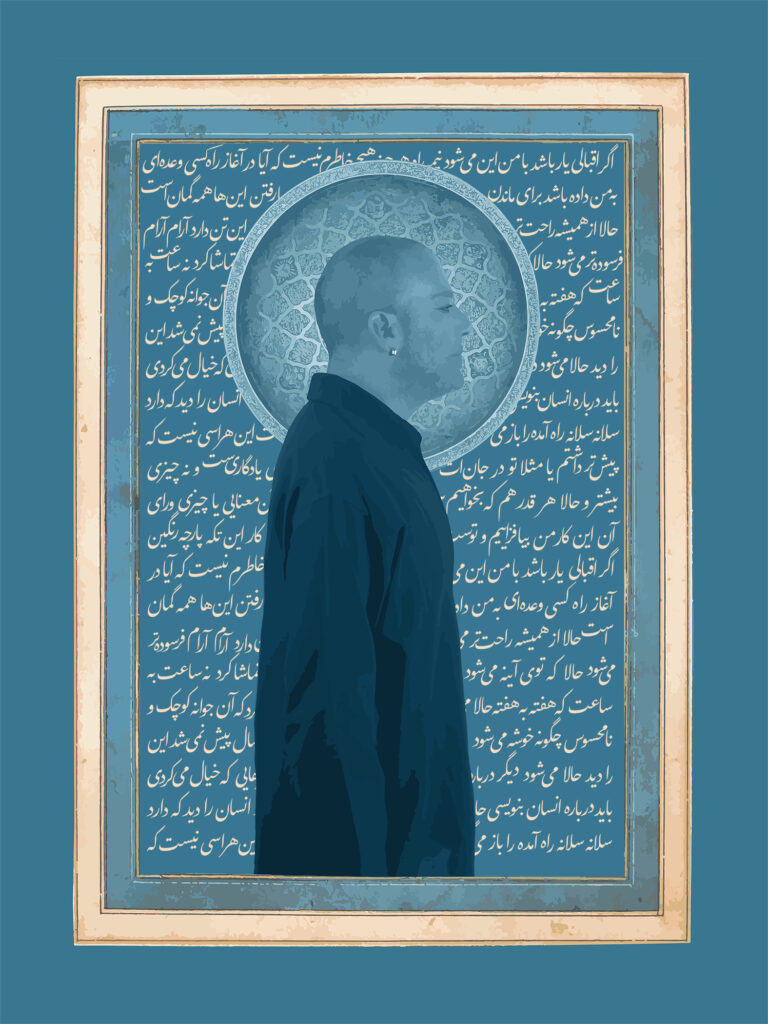
The 40 years old man
From the series Purdahs of Silence
by Ali Ettehad
Digital painting on textile
180X135
Edition: Unique + 1 AP
The text within the image reads as follows:
If fortune smiles upon me, this shall be my midway point—
though I have no memory of anyone at the outset
ever making me a promise to stay or to leave.
All this is but speculation.
Now I write with greater ease than ever before,
now that this body is quietly, gradually wearing thin,
now that in the mirror one can plainly witness
the transformation—
not hour by hour, but week by week.
Now one may sit and observe
how that small, unnoticed bud becomes a cluster,
how it turns into grapes.
Ten years ago, this could not be seen.
Now it can.
Now one may write about grapes
instead of things you once believed
ought to be written about people.
From this place along the path,
one can see the person
who strolls slowly, steadily, retracing
the way they came.
And this is not sorrowful.
This is not the fear I once held,
or that you, perhaps, carried within your soul.
This is a snapshot—
nothing more.
And no matter how much we may strive
to assign it meaning, or something beyond itself,
that is the work of you and me—
not the doing of this piece of colored fabric.
THE HISTORY OF THE SERIES PURDAHS OF SILENCE:
“Whence doth the good commence? Where lays the border separating the observer I and the subject of Evil? Till when will thine celestial headsprings seethe? Wherefore is my wickedness eternal? Who made thy purdahs? Who was the one who made my image? Up to where will my steps, bare or with leggings, come towards thee and up to where back towards me?”
“pardeh” refers to different meanings in Farsi; it could be interpreted as “pardehs” of an instrument: here “pardeh” means fret; it also means: curtain, hijab and tableau. That’s why I chose the word Purdah, because of its origin in Sanskrit literature; and that there is a similar word in English: “Pardaa” which has the same roots.
“Purdahs of silence” was an installation accompanying a long time performance. By entering the gallery; audience would encounter a covered space in white and a couple of tableaus hanging on the walls. Both tableaus were the artist’s self‐portraits. One of them was named “Anghia” and the other “Ashghia” which are the pretexts of holiness and evil. The artist has put himself in both these opposite situations and there were proportionate embroideries on these images chests.
After the performance came to an end which was coherent to the social‐political condition of Iran then; these tableaus have transformed into an ongoing project. Altogether they tell a story which is just like everyday life in Iran. All these Purdahs are artist’s self portraits. Each tableaus benefits from visual techniques of ancient Persian and Islamic illustration. And almost all of them refer to classic Persian literature. Each text is connected to a contemporary event of Iran’s history.
Tabula rasa (Latin: blank slate) is the epistemological thesis that individuals are born without built-in mental content and that their knowledge comes from experience and perception. Generally proponents of the tabula rasa thesis favor the «nurture» side of the nature versus nurture debate, when it comes to aspects of one’s personality, social and emotional behavior, and intelligence. The theory of tabula rasa was developed more clearly by the Iranian philosopher, Ibn Sina (known as «Avicenna» in the Western world).
He argued that the «human intellect at birth is rather like a tabula rasa, a pure potentiality that is actualized through education and comes to know» and that knowledge is attained through «empirical familiarity with objects in this world from which one abstracts universal concepts» which is developed through a «syllogistic method of reasoning; observations lead to prepositional statements, which when compounded lead to further abstract concepts.» He further argued that the intellect itself «possesses levels of development from the material intellect (al-‘aql al-hayula,ie), that potentiality that can acquire knowledge to the active intellect (al-‘aql al-fa‘al), the state of the human intellect at conjunction with the perfect source of knowledge.»
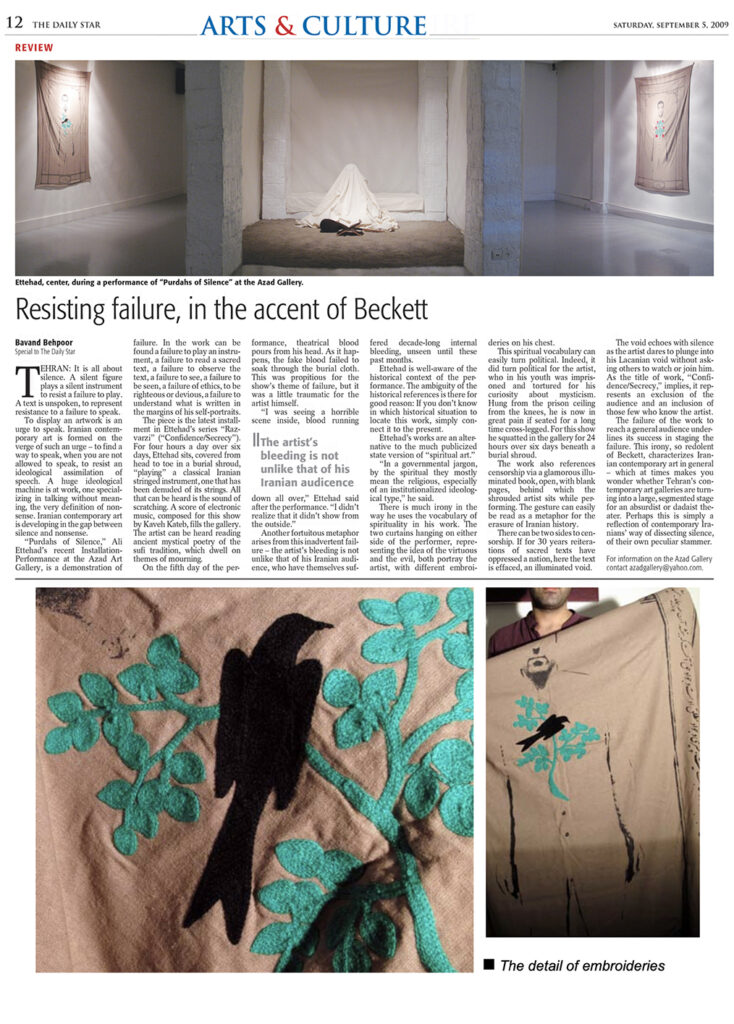
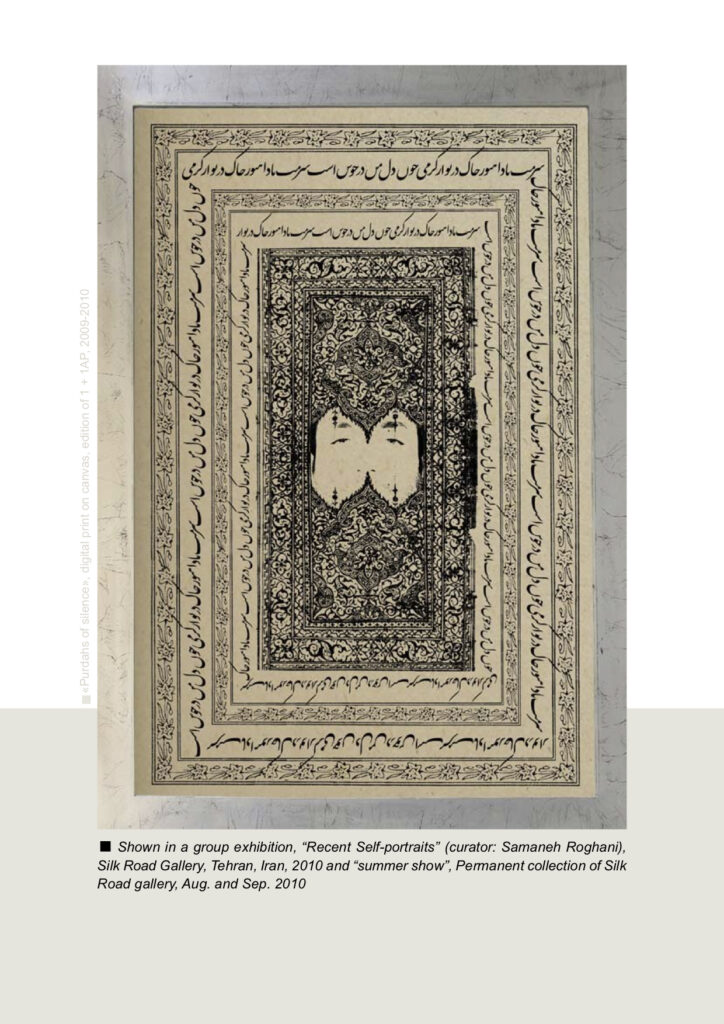
The text says: “Shame on you! the ground you are walking on is still burning with the warmth of my blood!” [abu saeed abolkheir (the poet) 967-1048 A.D]
(in Persian script there are so many letters which look quite the same except the dots and points that are mandatory so that it could be read. In this text the artist removed all the dots so the text becomes hard to read)
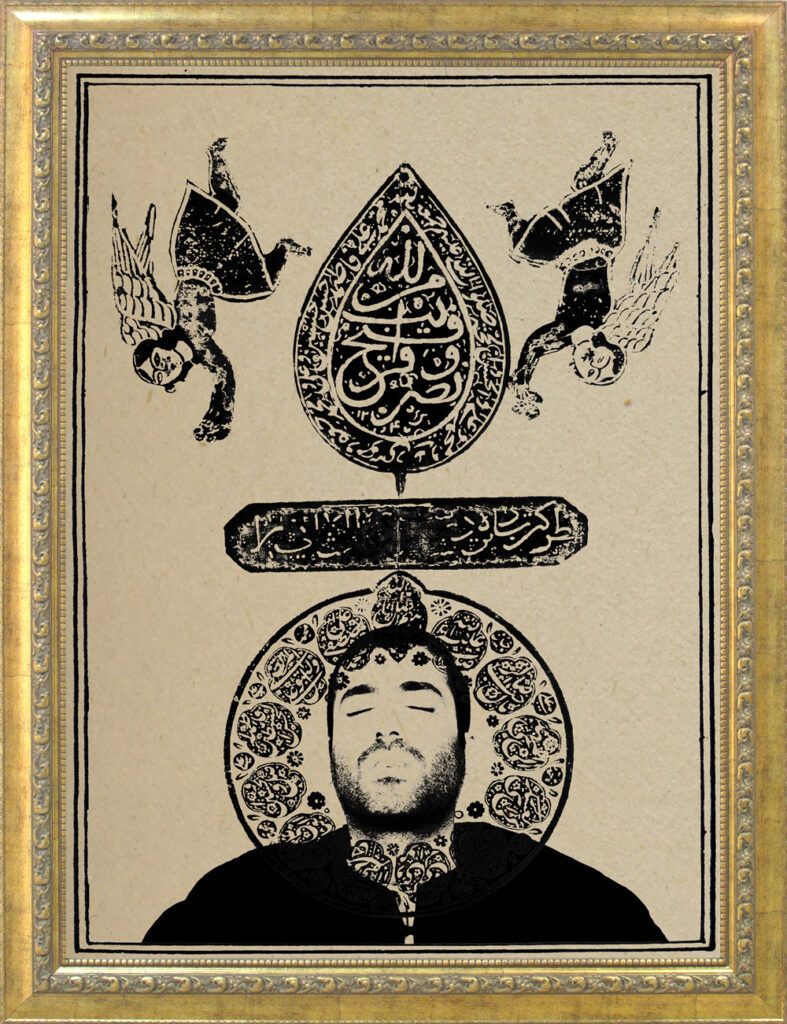
After the election in Iran (2009), one of the most popular slogans among protesters was based on a verse of Quran:
“victory from Allah and an opening that is near”
[Chapter 61: AS SAFF (THE RANKS) – verse 13]
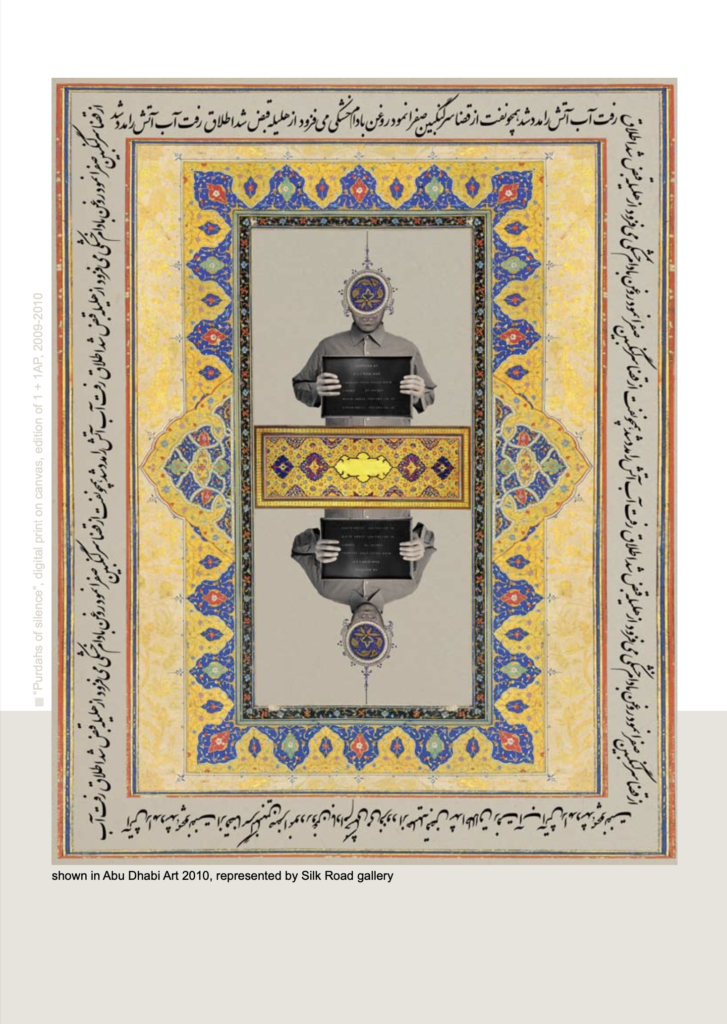
Shown in Abu Dhabi Art 2010, represented by Silk Road gallery
Now is in AL Collection (Lamya Alrashed), Jeddah Saudi Arabia
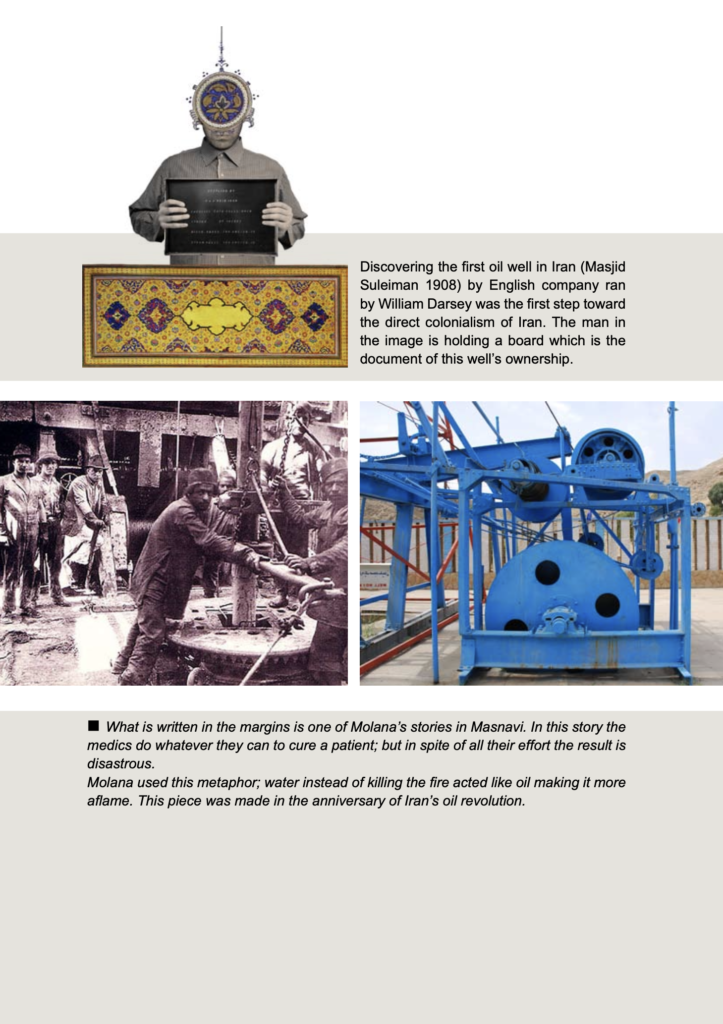
Discovering the first oil well in Iran (Masjid Suleiman 1908) by English company ran by William Darsey was the first step toward the direct colonialism of Iran. The man in the image is holding a board which is the document of this well’s ownership.
What is written in the margins is one of Molana’s stories in Masnavi. In this story the medics do whatever they can to cure a patient; but in spite of all their effort the result is disastrous.
Molana used this metaphor; water instead of killing the fire acted like oil making it more aflame. This piece was made in the anniversary of Iran’s oil revolution.

Shown in Abu Dhabi Art 2010, represented by Silk Road gallery
The piece is being collected by United Emirates Ministry of Culture and Youth

“The great wisdom answered: ‘ O my son, Frashaostra! It takes its seat near the head, singing the Ushtavaiti Gatha (a Part of Gatha) and proclaiming happiness: “Happy is he, happy the man whoever he be!” ‘On the first night, his soul sits in Good Words; on the second night, it sits in Good Deeds; on the third night, it goes along the ways (to Garo-nmana)”.
[Zend Avesta – Fragments, Fragments 5 (Vishtasp Yasht), verse 54]
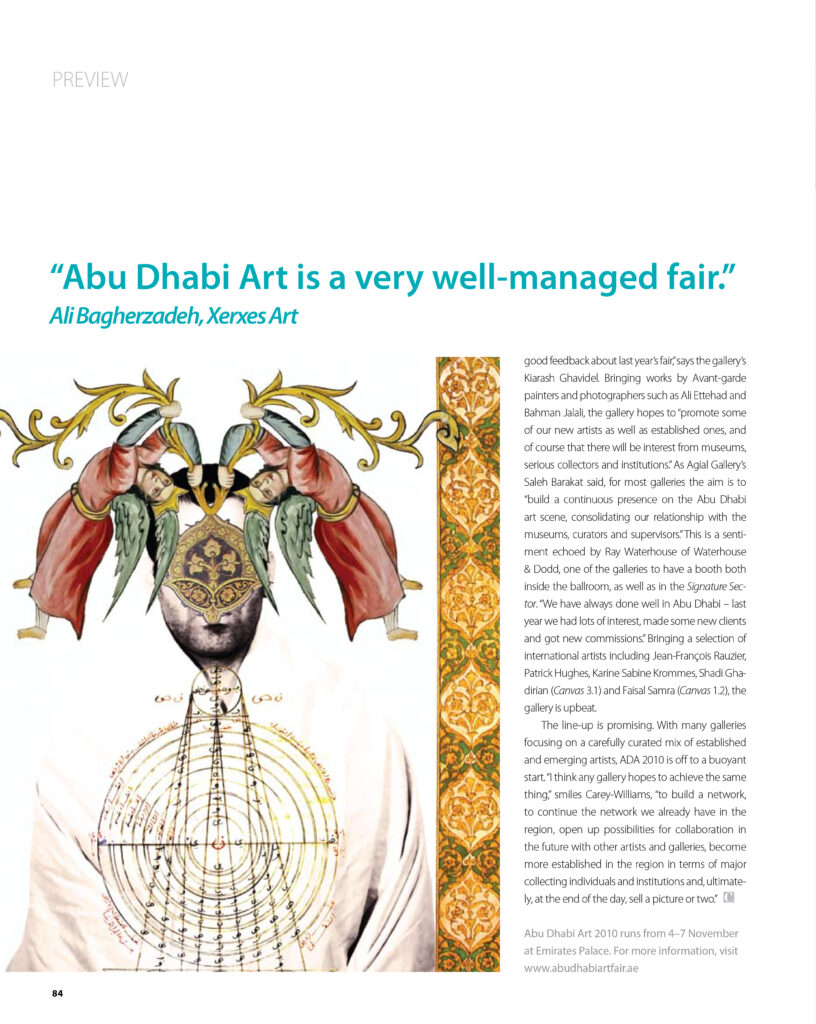
Canvas magazine, 2010

Text says:
I
I the tulip
Red, red and thirsty
Never to be quenched of the blood of you and your companions. You worship me; you worship me in each verse of your psalmI who have the scarlet letter at my chest, but I drink of your veins to the last drop of your blood.
My leaves search under your skin to find the capillaries that hide the last drops of your blood.I am the tulip! And each and every calycle of mine has been drinking of your blood Not at night, nor at day and not even for a moment even for a blink of an eye, my thirst for the succulence of your blood will be gone
Never to be quenched from the sweet liquid of your veins; and each time you forget my presence, even for a moment; I will be showing you the long row of
lifeless and dried bodies.
In Persian literature tulip is a metaphor for blood. Thus in the past 100 years and during demonstrations; so many poets have used this word as a metaphor for martyrs. That is how during three past decades and after the Islamic revolution it has become the official symbol for martyrs; and it has been frequently used in governmental ad- vertisements. During these two decades, each time there has grown a protest against governments or politicians; they had arranged a ceremony to hold the respect of the martyrs of the war between Iraq and Iran. Claiming to have found bodies of this war in the desert; there have been caravans of thousands of coffins covered with Iran flag and a tulip at the chest of each coffin.
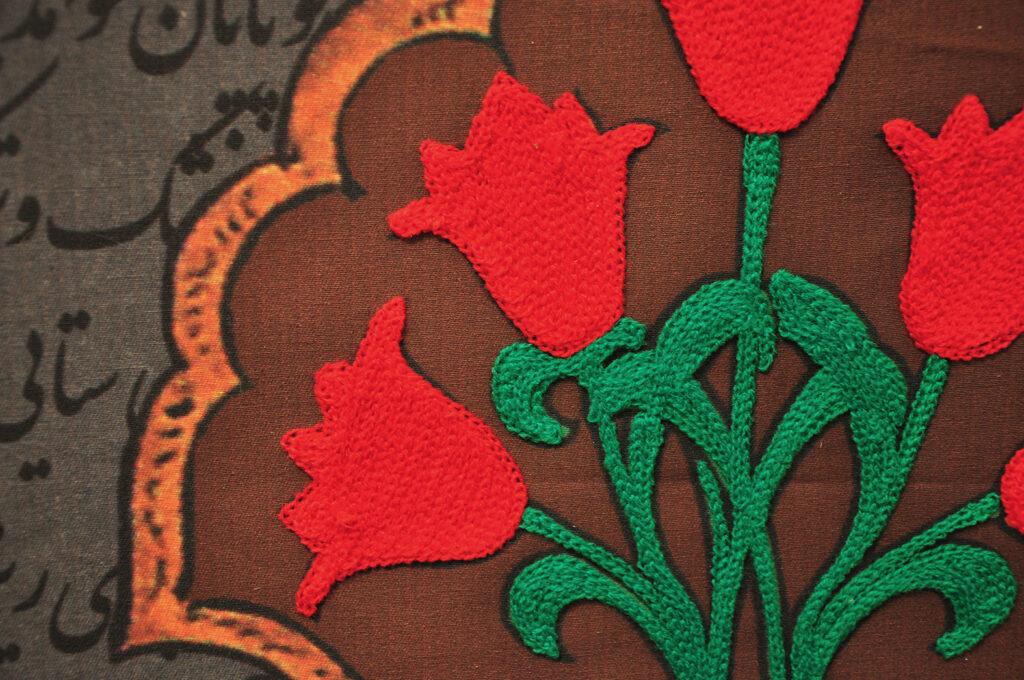
Shown in Contemporary Istanbul 2011, represented by Etemad gallery
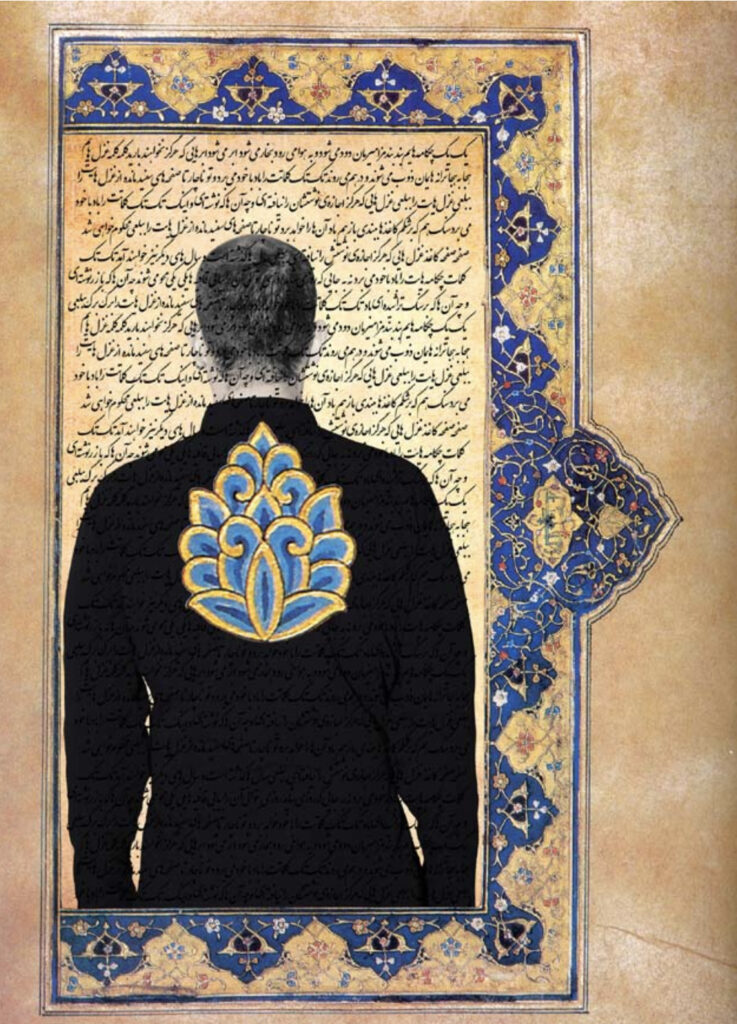
Text says:
Each one of my odes
each verse of our psalms;
melts into the air; Turns into steam Become clouds
The clouds which would never rain; ever word for word of my sonnets
letter for letter of our odes
melt away; mixing together
The wind will blow all your words away then you have to swallow the unwritten sheets of your sonnets
to swallow your sonnets
the sonnets you were never allowed to write
And what you have written
behold; is blowing away with the wind the wind will blow it all away even if you truss your sheets with a stone
You have to swallow the white sheets of your sonnets
you are convicted to swallow all the blank
papers
all the papers of the sonnets you were never
allowed to write
Years have passed
and Years are to come
Word for word of your odes
will be blown away by the wind
not to the place that one day Perhaps one
day You can find them
The rhymes will be fading away
one by one
Either the ones you have gold written
or those you have graved on stones
the wind will blow all your letters away And you have to swallow all the unwrit- ten
sheets of your sonnets
to Swallow them
Sheet for sheet
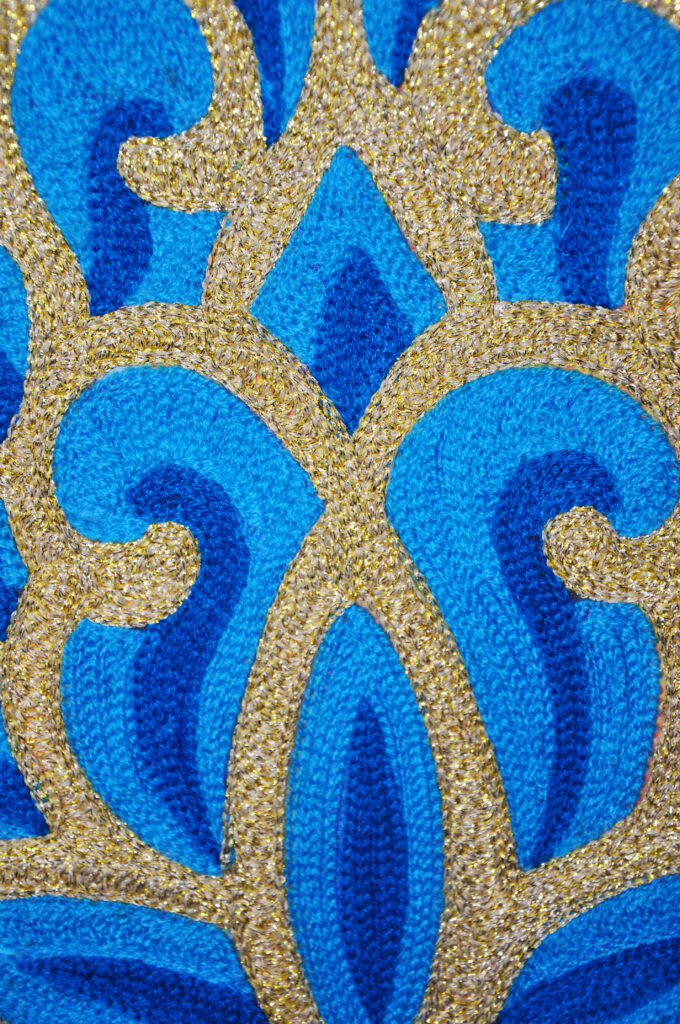
Shown in Contemporary Istanbul 2011, represented by Etemad gallery


